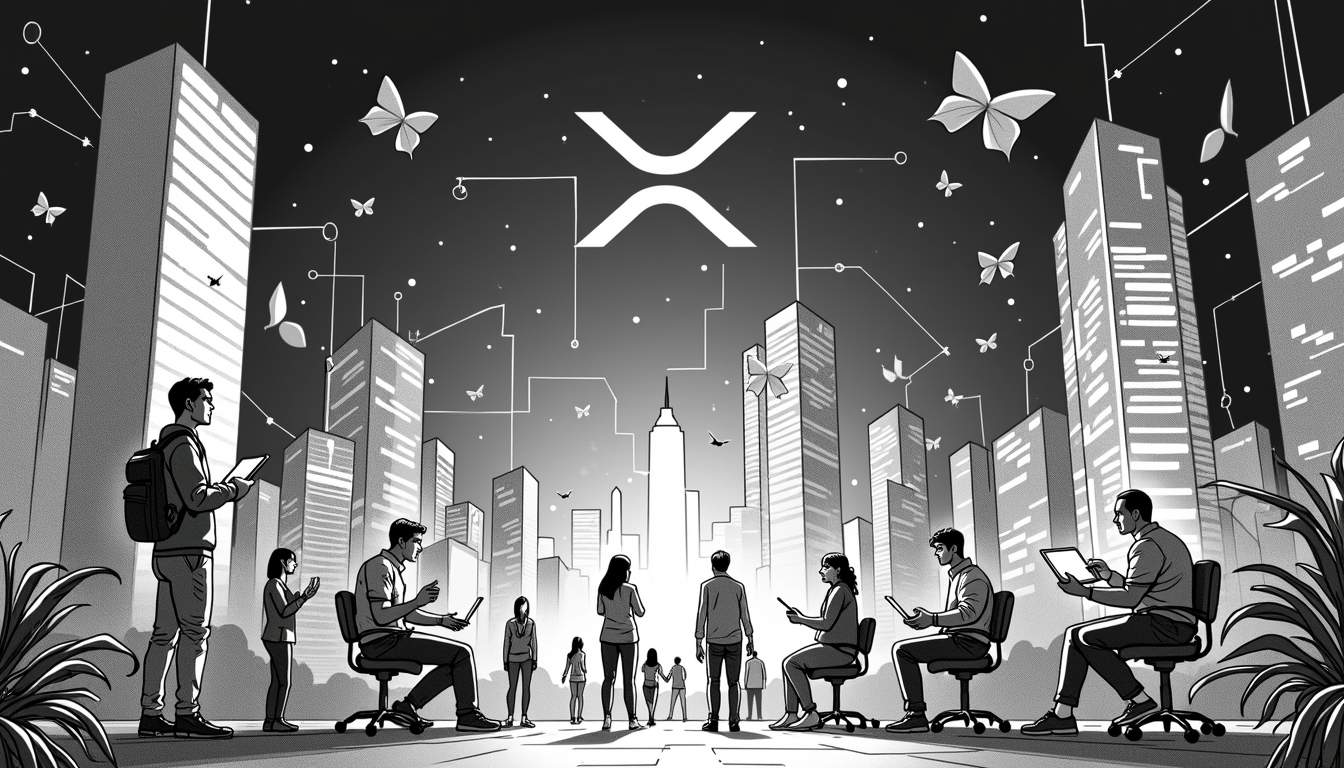XRP is changing the game in the crypto world with its wide-ranging applications and incredible efficiency. Whether it’s making cross-border payments smoother or allowing for easy microtransactions in gaming, XRP is leading the charge in digital innovation. In this post, we’ll dive into the many use cases of XRP and how it’s helping to shape the future of digital transactions, while also navigating legal issues in blockchain.
- Understanding XRP and Its Crypto Applications
- Cross-Border Payments: Speed and Cost
- Efficiency
- Cost-Effectiveness
- Fewer Intermediaries
- On-Demand Liquidity (ODL)
- Applications
- Benefits
- Real-Time Gross Settlement Systems (RTGS)
- Utilities
- Microtransactions in Gaming
- Speed and Scalability
- Cost-Efficiency
- Adoption
- Decentralized Finance: Legal Issues in Blockchain
- Potential
- Legal Challenges
- Tokenized Assets and CBDCs
- Utilities
- Other Uses
- Summary
Understanding XRP and Its Crypto Applications
XRP is the native digital asset of the Ripple network, created to facilitate fast and inexpensive international payments. With its distinct characteristics, it is well-suited for various applications, including cross-border transactions, decentralized finance (DeFi), and more. This post will explore XRP’s numerous use cases, emphasizing its advantages and potential in the dynamic crypto ecosystem.
Cross-Border Payments: Speed and Cost
Efficiency
When it comes to cross-border payments, traditional methods can take ages—days or even weeks. They often involve multiple intermediaries and hefty costs. XRP, on the other hand, can process transactions in mere seconds, thanks to its elimination of needless intermediaries.
Cost-Effectiveness
The Ripple network drastically cuts down on transaction costs by removing the need for intermediary banks. Transactions can cost as little as $0.00001, making it far more economical than conventional options. This is particularly advantageous for banks and remittance services, allowing them to provide better rates to their clients.
Fewer Intermediaries
By enabling a direct line of communication between sending and receiving institutions, Ripple reduces the number of correspondent banks, lowering both costs and delays.
On-Demand Liquidity (ODL)
Applications
On-Demand Liquidity (ODL) uses XRP to provide instantaneous liquidity for cross-border transactions. This means no more pre-funded accounts—money just sits there, waiting to be used. With ODL, financial institutions can unlock capital and cut down on costs associated with keeping these accounts.
Benefits
Banks and remittance providers can particularly benefit from ODL, as it allows them to streamline international payments and offer quicker, cheaper services, thereby enhancing their competitive edge.
Real-Time Gross Settlement Systems (RTGS)
Utilities
RTGS systems are designed for real-time settlement of high-value transactions. By using XRP, these systems can process transactions instantly, reducing risk and cost from delayed settlements. This is especially crucial for banks and financial institutions managing large-value transactions.
Microtransactions in Gaming
Speed and Scalability
XRP is known for its fast transaction speeds, usually between 3-5 seconds. This rapid processing is essential for keeping gaming experiences smooth, especially in fast-paced online games. The Ripple network can handle up to 1,500 transactions per second, and technically, it could scale to 50,000 transactions per second if necessary.
Cost-Efficiency
Low transaction fees make XRP the perfect fit for microtransactions, allowing for in-game purchases and player-to-player exchanges without significant additional costs. This enhances both game economies and user experiences.
Adoption
Roblox’s recent implementation of XRP for in-game purchases through Xsolla-BitPay showcases the viability of XRP in gaming. This allows over 200 million monthly active users to fund their in-game purchases effortlessly, which could lead to more widespread acceptance of crypto payments in the gaming sector.
Decentralized Finance: Legal Issues in Blockchain
Potential
XRP can support a plethora of DeFi applications, such as lending, DEXs, and yield farming. Its quick and cheap transactions enable more accessible financial services.
Legal Challenges
However, potential legal issues loom large due to its ongoing legal battle with the U.S. SEC, which alleges that XRP is an unregistered security. While a court ruled in July 2023 that XRP is not a security for retail transactions, the SEC is appealing. This creates ongoing uncertainty for XRP’s DeFi applications.
Tokenized Assets and CBDCs
Utilities
XRP can tokenize real-world assets on its ledger, which improves asset management and trading. Ripple is also collaborating with central banks to issue Central Bank Digital Currencies (CBDCs), enhancing cross-border transactions.
Other Uses
From remittances and P2P payments to supporting supply chain finance and charity donations, XRP’s potential applications seem limitless. It can also help with AML and regulatory compliance.
Summary
XRP’s wide-ranging applications and efficiency position it as a key player in the crypto and blockchain space. From improving cross-border payments to enabling microtransactions in gaming, XRP is at the forefront of digital innovation. While there are ongoing legal issues in blockchain, XRP’s potential to revolutionize various sectors remains evident. As the crypto landscape evolves, XRP will likely play a pivotal role in shaping the future of digital transactions.








